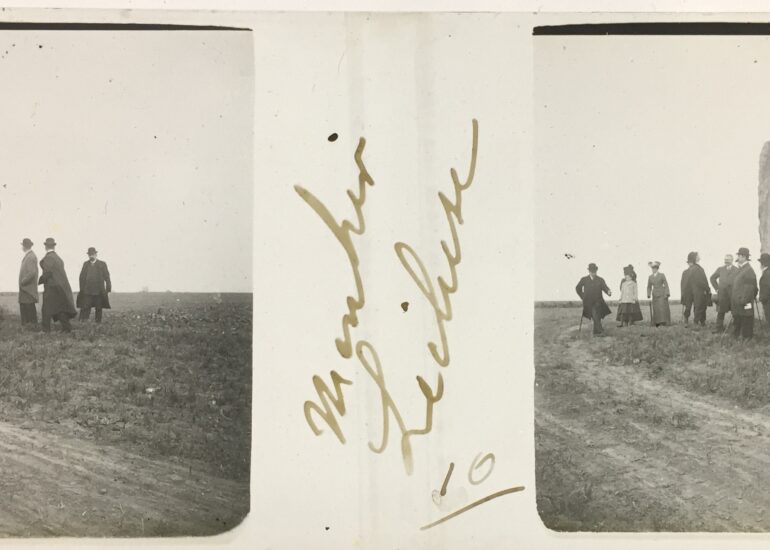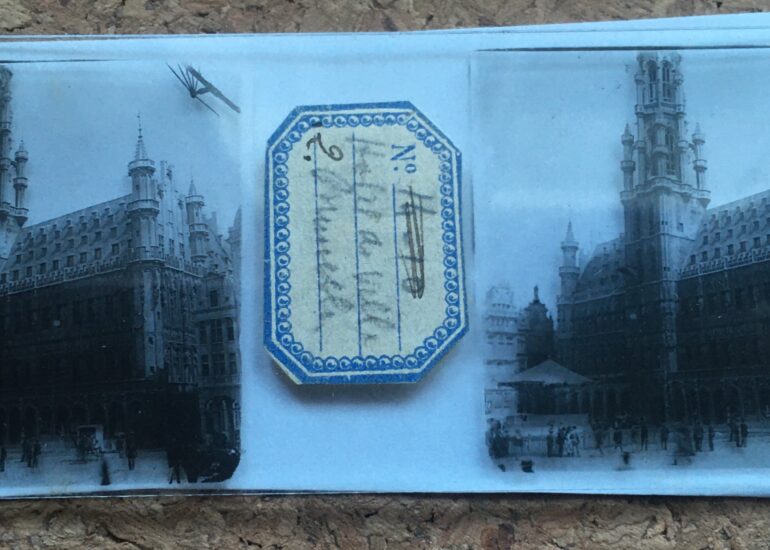Review in English
La Belle Epoque: series of acrylic paintings created by Anaïs Iris Zhang in 2020
East Wind, West Wind.
Eastern painting and western painting have influenced each other in a number of ways (whether we think of the popularity of the 19th century Japonism or the lyric abstraction of Zao Wou Ki). Anaïs Zhang, with her dual heritage, fits right in this trend.
Born in Zhuhai, she studied at the University of Fine Arts in Guangzhou: East Wind.
Her marriage to a French man, her numerous travels through Europe, the discovery of new country sides, her frequent visits to museums have left a profound impact on her: West Wind.
From one series to another, she seems to reinvent impressionism and fauvism as much in the form as in the content. Her series La Belle Epoque revives the main themes of impressionist painting (natural landscapes, cathedrals, scenes of modern life…). But something poignant emerges from these images of a bygone past. Who are these groups of people who haunt her canvases ? What ghosts has the artist’s brush awakened?

Family Secrets
To understand the originality of Anaïs Zhang’s undertaking, you have to go back to its origin and discover that the paintings are kind of palimpsests: one art work hides another. La Belle Epoque series begins with the discovery in the attic of the family home of photographic glass plates of her husband’s great grandfather, Paul Verdun, a brilliant doctor who became a passionate aficionado of the new art of photography. Paul Verdun used a “Vérascope”, a stereoscopic device whose particularity is to have two chambers and two lenses in the same box. It produces twin pictures (similar but not identical) which are printed on thin glass plates. Another device allows you to view the images in three dimensions.
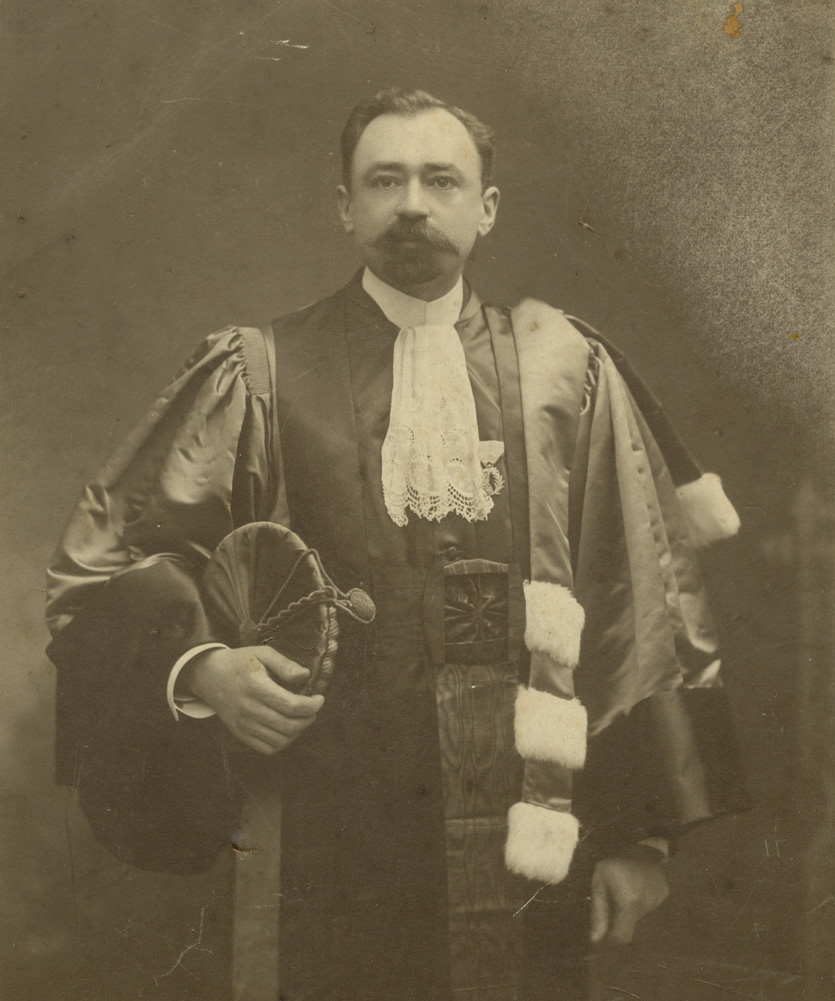
The World Before
Paul Verdun took thousands of photos that capture the atmosphere of La Belle Epoque. This refers to the 20 years preceding World War One. The war period was marked by millions of deaths, the horror in the trenches, the landscapes in ruins and the “gueules cassées”.
Some of the glass plates photos bear witness to these war scenes but most of them revive the poetry and carefree feeling of the world before. Before the war, France experiences a period of economic prosperity. Technological innovations soar.
We read Le Petit Journal or Le Petit Eclaireur. We shop at Le Petit Campeur. The bicycle is called La Petite Reine. The harmony of the small and the comforting was shattered by the Great war.
The glass photos also highlight the trends among the wealthy bourgeoisie, their travels and their excursions.
Painting or Photography?
Paul Verdun has undoubtedly an artistic outlook on the world. He is concerned with composition. His photos tell stories and capture fleeting and ephemeral moments in life, sometimes with a lot of humor.
We can smile at the vision of the group of dressed-up bourgeois, good catholics and self righteous people forming a circle around a standing stone, phallic symbol of a vanished pagan religion.
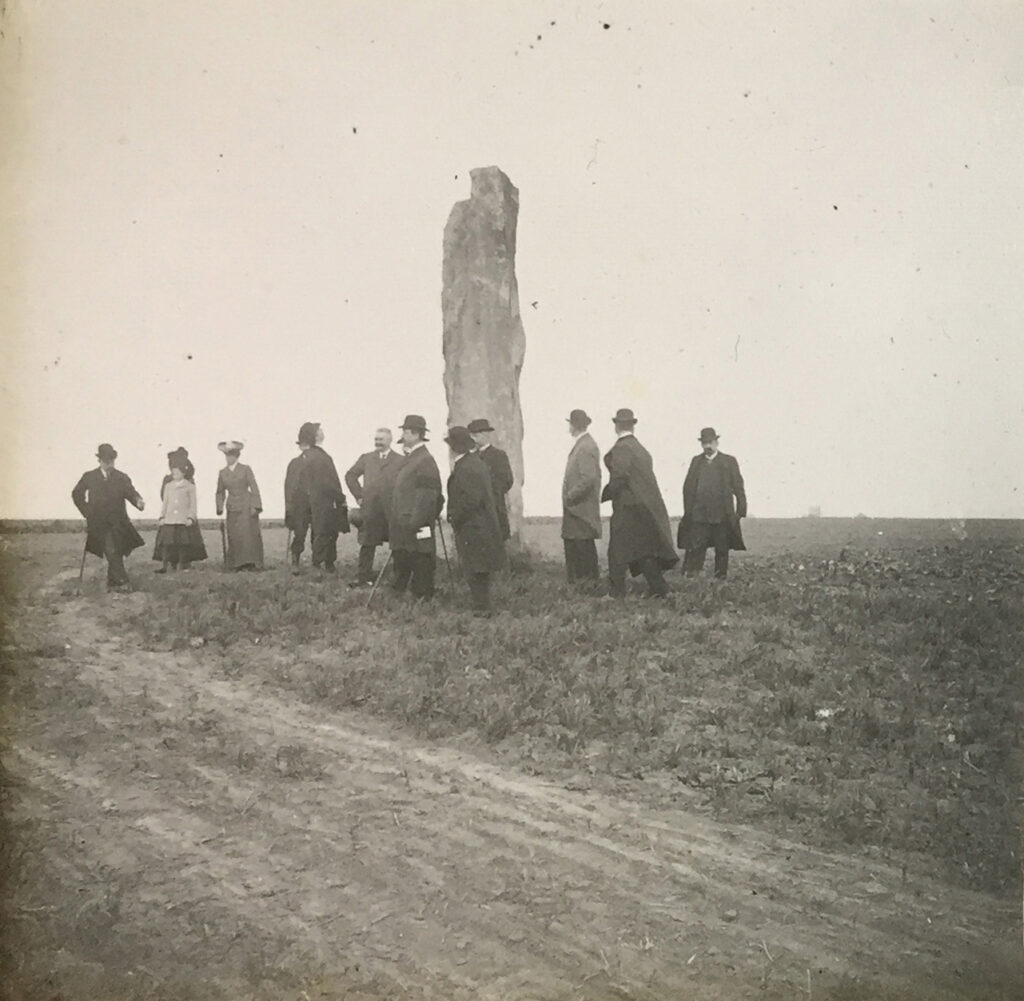
Anaïs Zhang chose to give a new life to the photographs, starting with color. Here is an example which captures the complexity of the artist’s work. Let’s set up side by side the painting and the photograph which served as a model.
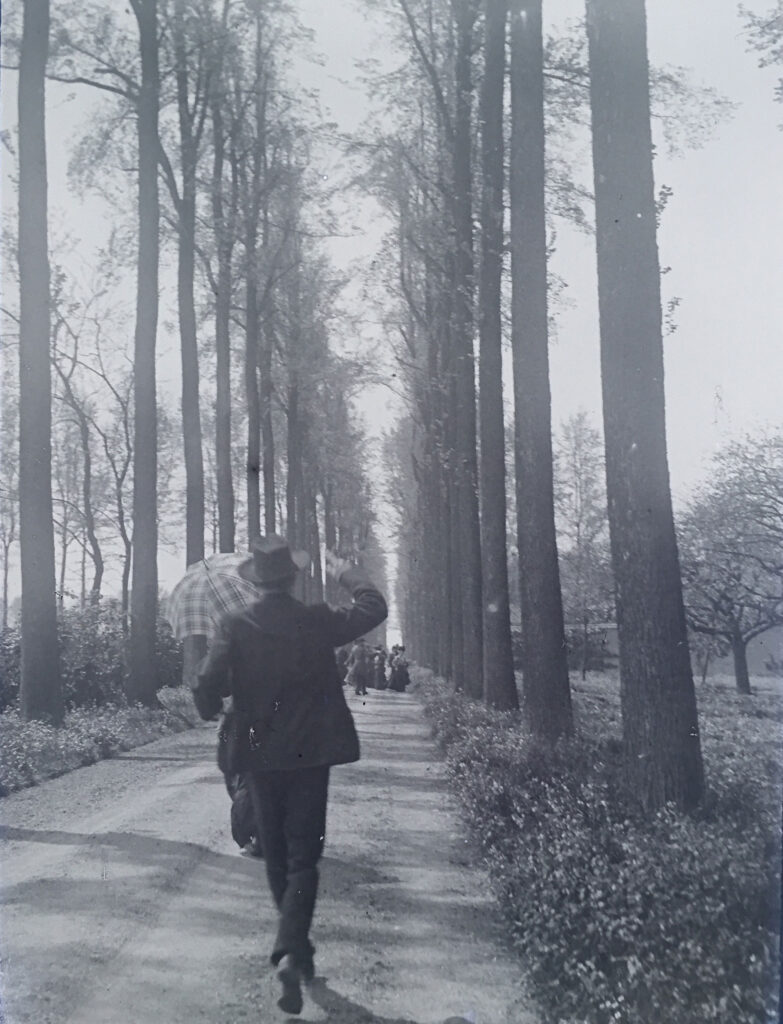
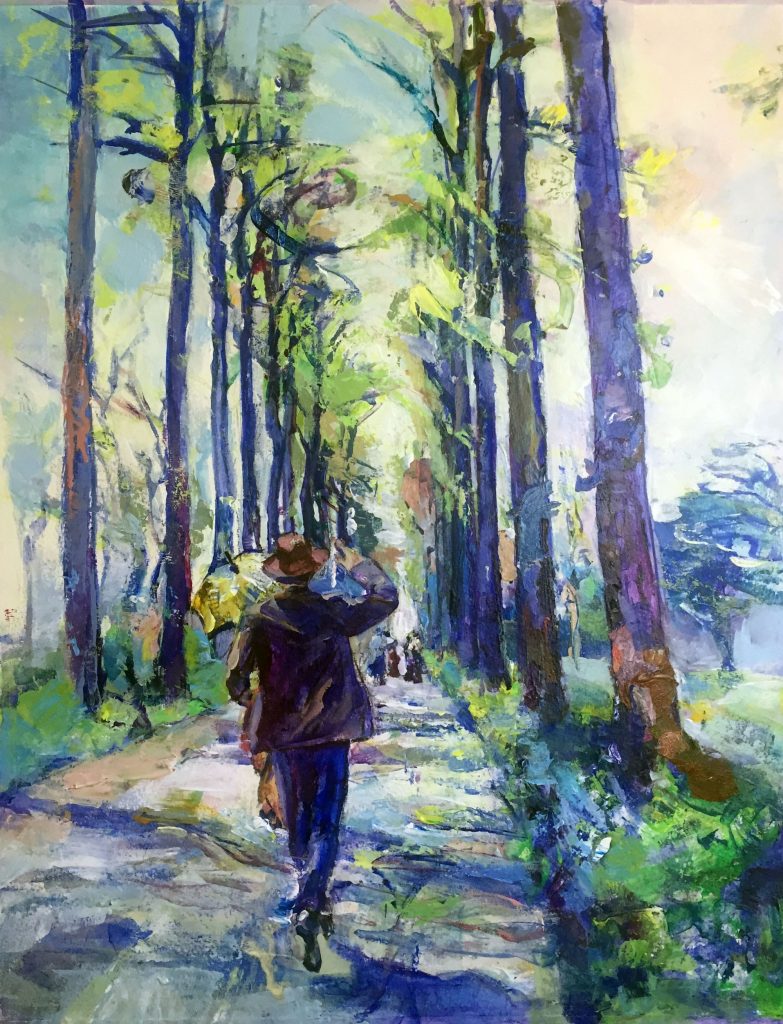
We are on a tree-lined road. The photo shows a little drama. The walkers are separated, some have fallen behind and have to catch up with the others. He photographs the characters from the back, they become faceless silhouettes. Anaïs Zhang borrows from the photo the impeccable composition. She likes structured compositions; it is a constant in her artwork. The landscapes are organized with the vertical and horizontal lines provided by the trees, the paths, the fences and the riverbanks. The color and dissolution of the forms in the painting create more the illusion of movement than the black and white photo. The dramatic tension is accentuated. But an object catches our attention. In the photography, the gentleman in the foreground hides the silhouette of his wife, of which we only perceive the sun umbrella.
The artist did not reproduce the Burberry pattern, however magnificent. Anaïs makes a circle of colors out of it in harmony with the foliage of the trees. It is all in the details. The sun-umbrella marks the transition from black and white to color. This circle is like the lens or the shutter which makes it possible to capture the light. A revealer is a chemical bath which allows to develop a photo. Paul Verdun’s glass plates are the negatives of the images, and Anaïs paintings reveal their beauty. The circle formed by the umbrella becomes the eye that reflects the shimmer of the world.
Iris, part of the eye
Iris, in mythology, rainbow goddess, messenger of the gods
Iris, another one of Anaïs’s name, connects two rivals, painting and photography, two generations, two artistic heritages, the Occident and the Orient.
Jeanne Verdun, May 2020

